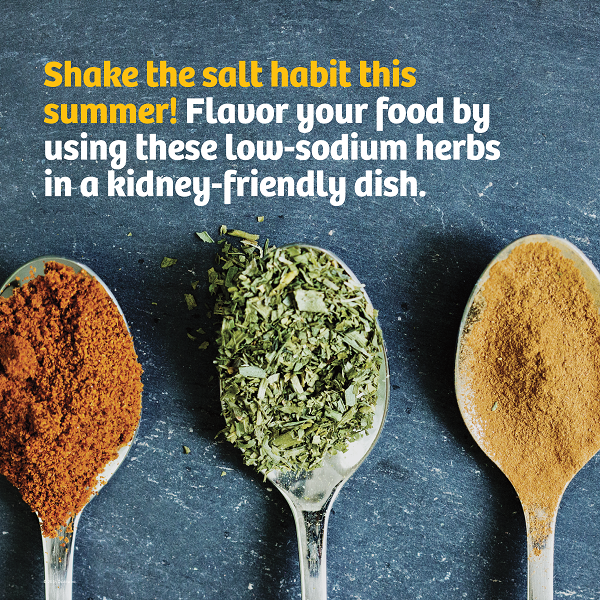Go Low: Lower Potassium Fruit and Vegetable Choices
Summertime is here and full of fresh fruit and vegetable choices. While these fresh foods are packed with healthy vitamins and minerals, some produce choices are high in potassium. A person with chronic kidney disease (CKD) on a low potassium diet cannot safely handle too many high potassium foods. For this reason, your doctor or dietitian may ask you limit the amount of potassium you take in. This is based on your individual potassium blood test results; not all kidney patients need to limit potassium.
As a good rule of thumb, a low potassium fruit or vegetable has less than 250 mg of potassium per 1/2 cup. The good news is there are plenty of fun and tasty lower potassium choices. Check out these low potassium alternatives and recipes.
Bold Berries
On the fruit front, berries are a safe and low potassium choice. Strawberries, raspberries, blueberries and blackberries have between 57 and 116 mg potassium per 1/2 cup. Berries are versatile and can be added to many dishes to amp up summertime flavor.
Check out these berry-themed dishes: 
Triple Berry Salad with Cottage Cheese
Go Green
Lower potassium green vegetables, including Brussels sprouts, asparagus, green beans, okra, cabbage, broccoli and raw spinach, are all nutritious and low potassium alternatives. Depending on the time of year, purchasing these vegetables in season may mean tastier veggies as well as a lower price.
A quick note on spinach: raw spinach is low in potassium with only 84 mg per 1/2 cup of chopped fresh spinach. However, cooked spinach is high in potassium with 420 mg potassium per 1/2 cup of boiled spinach. This is because the spinach leaves are concentrated during the cooking process. The cooked spinach portion is equal to 2-1/2 cups of raw spinach..
Check out these lower potassium green vegetable dishes: 
Marinated Fresh Vegetables (Marinada de Vegetales Fresco)
Drink Up
Another place to watch for potassium is in fruit and vegetable juices. Drinks such as tomato juice or orange juice can contain as much as 450 mg of potassium per 8 ounces. However, lower potassium juices such as cranberry juice contain less than 100 mg of potassium per 8 ounces. Try a fun summertime fruit smoothie.
Check out these kidney-friendly smoothie options that are below 250 mg of potassium per serving: 
Easy Pineapple Protein Smoothie
With these lower potassium choices, navigating the fruit and vegetable scene is a breeze. By making a few small changes, fresh fruit and vegetables can be a part of your diet without causing high potassium. As always, remember to check with your doctor or renal dietitian to ensure how much potassium you can safely have each day.
In addition, herbs are low in potassium and help add flavor to a low salt diet. Consider the variety of flavors to spice up your diet.

Click here for additional kidney diet tools and resources from DaVita.
This article is for informational purposes only and is not a substitute for medical advice or treatment. Consult your physician and dietitian regarding your specific diagnosis, treatment, diet and health questions.

Recent Comments